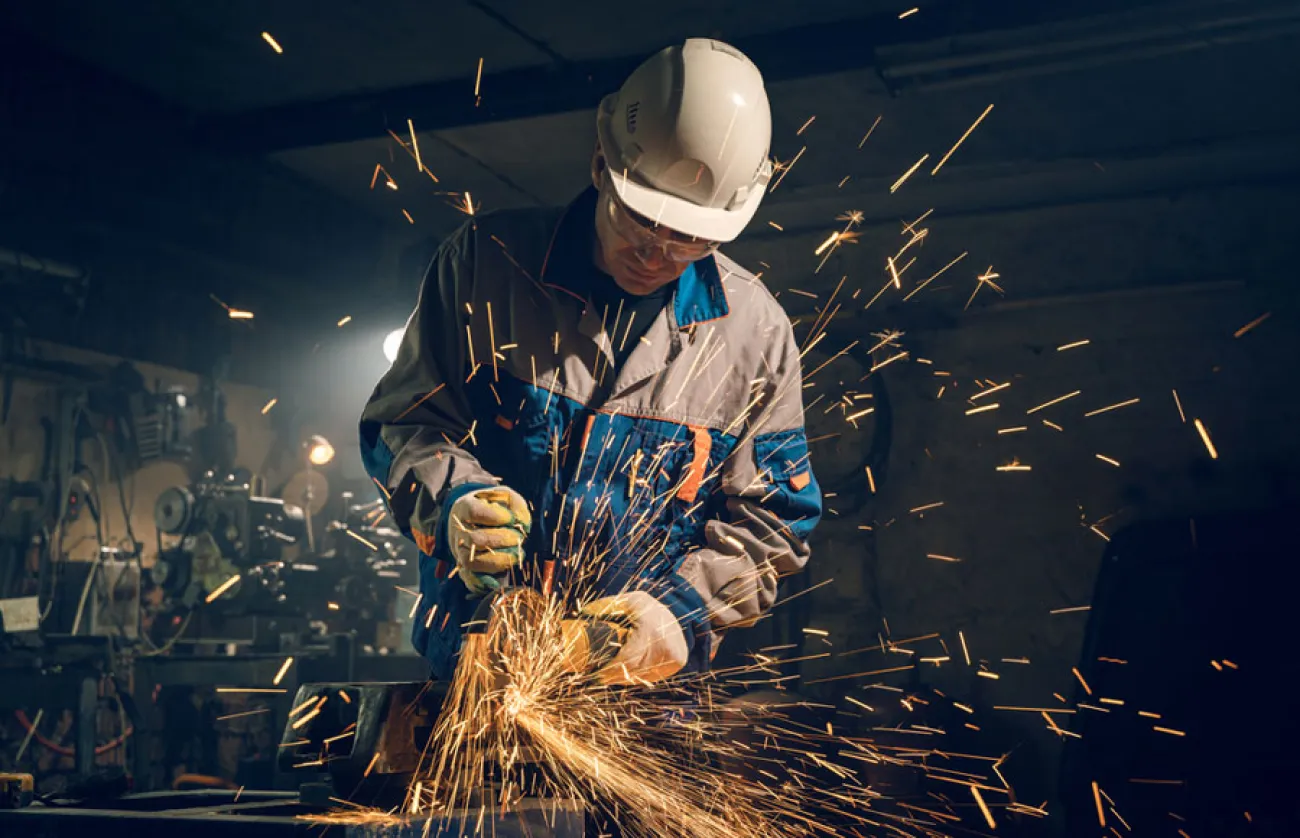
By SkillPointe Staff
Union construction jobs offer advantages that nonunion construction jobs can’t always provide, but there are many details to consider.
What are the benefits of joining a construction union?
Union jobs provide benefits that workers enjoy on the worksite and beyond. They include:
1. More Apprenticeship Opportunities
The most notable benefit is the opportunity to participate in a registered apprenticeship program, which offers a debt-free path to secure employment with high earnings and good benefits. Trade unions and some employers offer apprenticeships. However, there are only about 240,000 apprenticeship openings each year in the U.S., so it’s a competitive process. For comparison, there were 18.6 million college students in the United States in 2021.
2. Competitive Wages
One of the advantages of joining a construction union is that workers benefit from the union’s workplace protections and set pay standards.
Union jobs typically pay well because union contracts are negotiated on behalf of the members. These negotiations may also enhance workers’ job security.
3. Guaranteed Benefits

Construction union members enjoy guaranteed benefits. These benefits can include health programs, paid sick leave, a pension and retirement accounts. Construction workers who don’t belong to a union may also have these benefits, depending on their employer, but independent contractors do not.
In addition, many union construction workers and their families get access to scholarships and loyalty rewards programs.
4. Predictable Hours
Union jobs in construction offer predictable hours. Being in a contract with the union means you also will earn overtime pay and shift premiums for irregular shifts.
5. More Training and Fewer Labor Shortage Issues
Working a union job has another surprising benefit that can influence how smoothly a job is completed. The skilled labor shortage is less severe for unions, according to a report from the Illinois Economic Policy Institute (ILEPI) and Project for Middle Class Renewal (PMCR) at the University of Illinois at Urbana Champaign.
The report's authors, who looked at four years of survey data from the Associated General Contractors of America, found that union investments in training and apprenticeship programs made them better able to attract and retain skilled construction workers.
For individual workers, this means more training opportunities and less stress in a union construction job.
As Frank Manzo IV, executive director of ILEPI and co-author of the report, told Insider, "Their joint labor management apprenticeship programs deliver a more robust training regimen, higher completion rates and, and better earnings than the employer-only kind of nonunion apprenticeship programs."
6. Workplace Equity and Workplace Protections

Workplace equity means pay and schedules are unbiased.
For example, compensation is negotiated by the union. Every worker with the same skill set earns the same salary, regardless of gender, race or age.
Unions also offer protection from dismissal without just cause. The union has the power to appeal any disciplinary action taken against the worker. Construction unions coordinate conversations between management and workers to ensure issues are resolved appropriately. Workers who are not part of a union, sometimes called at-will employees, don’t enjoy this benefit.
7. Striking or Collective Bargaining
If you and your fellow workers believe your union construction job offers unacceptable pay or unsafe work conditions, you have the right to strike.
Union members can strike or enter what’s called collective bargaining, which is when management and workers work out a compromise. If you’re not part of the construction union, you will likely be dismissed if you attempt to strike.
8. Workplace Safety
Department of Labor statistics have shown union worksites to be less likely to have an Occupational Safety and Health Administration (OSHA) violation and have significantly fewer violations per OSHA inspection than nonunion workplaces.
What are the drawbacks of joining a construction union?
Along with the benefits, there are downsides to union construction jobs. Some of the drawbacks include:
1. Union Dues
Union members are required to pay dues, which can be a significant expense. Dues vary depending on the union and the industry, but they can add up to hundreds or even thousands of dollars per year.
In many cases, dues come directly out of your paycheck.
2. Strikes and Work Stoppages
Sometimes, ongoing negotiations between management and the union break down and the union decides to strike. Union workers are then faced with a decision to either join the strike or cross the picket line and risk their membership with the union.
While a strike can help the union achieve its goals, it also puts workers’ jobs at risk and hurts the company’s bottom line.
3. Seniority Rules
A union workplace is structured by seniority, which means less experienced members must wait their turn for the most desirable positions and shifts.
Typically, unions also promote from within for certain positions. It’s unlikely that a union will hire from the outside for a position unless no one in the union wants the job.
Is it hard to join a union?

Applying is a straightforward process, but acceptance into the union is less likely if there is a large number of applicants. It’s more difficult to be accepted into a union during an economic downturn.
You may need to network with union members and representatives to get hired within the union.
How to join a union
First, determine which union is right for you. Unions are typically organized by industry.
Examples of well-known unions include:
- United Brotherhood of Carpenters and Joiners of America (UBC)
- International Association of Machinists and Aerospace Workers (IAM)
- International Brotherhood of Electrical Workers (IBEW)
- The United Association of Journeymen and Apprentices of the Plumbing and Pipefitting Industry of the United States and Canada (UA)
- National Electrical Contractors Association (NECA)
- National Elevator Industry Educational Program (NEIEP)
- International Union of Bricklayers and Allied Craftworkers (BAC)
- International Brotherhood of Boilermakers, Iron Ship Builders, Blacksmiths, Forgers and Helpers (IBB)
- United Union of Roofers, Waterproofers, and Allied Workers (UURWAW)
- Operative Plasterers' & Cement Masons' International Association (OPCMIA)
- International Brotherhood of Teamsters
- Laborers' International Union of North America (LIUNA)
- International Union of Elevator Constructors (IUEC)
- International Association of Bridge, Structural, Ornamental and Reinforcing Iron Workers (IW)
- International Union of Operating Engineers (IUOE)
- International Association of Heat and Frost Insulators and Allied Workers (HFIAW or Insulators)
- International Union of Painters and Allied Trades (IUPAT)
- International Association of Sheet Metal, Air, Rail and Transportation Workers (SMART)
To join a union, you must meet their requirements and complete a membership application.
How to find construction training and jobs

The first step to getting a union construction job (or any construction job) is completing a training program.
The good news: There’s typically an abundance of training opportunities to choose from, and jobs in construction are plentiful. Once your training is complete, you can apply for construction jobs in your area or in another city.
SkillPointe is a great way to find nonunion and union construction jobs. It’s easy to search for construction jobs in your area or to access the training you’ll need to get them. If you’re still wondering which construction path to take, SkillPointe describes many construction careers in detail to help you decide which one is the best fit for you.
Explore careers in construction and get started on your next chapter!
Feeling overwhelmed with options?
Take the SkillPointe Quiz
It’s OK if you don’t know what you want to do. This short visual quiz will help you identify skills-based careers that best match your personality.
